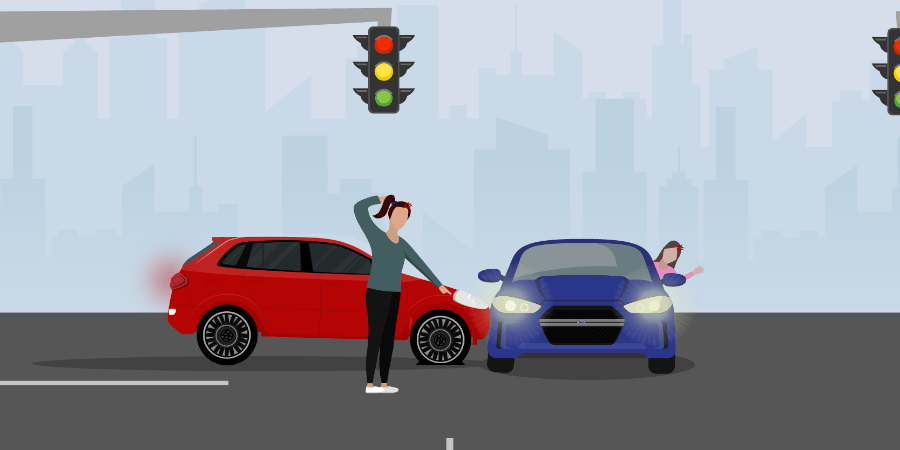
Typically, when someone is injured in a car accident and they wish to make a claim against the other driver, it is their responsibility to prove that the other driver was at-fault for the accident, and that the accident caused their injuries.
Your personal injury lawyer will take the time to go through the facts of your case, including police reports, witness testimony, and any other pertinent information to prove the other driver was at-fault for the accident.
Although the likelihood of going to trial is low, your lawyer will make sure that every box is checked along the way to ensure the best case is built in the event a trial occurs. At MacGillivray Law, our lawyers are trained to advocate for our clients in securing a settlement or arguing a case in court.
How to prove who is at fault in a car accident
Proving fault in a car accident falls under the principles of negligence. In order to prove negligence, four things must be proven:
- A duty of care is owed: A duty of care is a legal obligation to act reasonably and avoid harming others through your acts or omissions. A duty of care is owed between all motorists on the road. There is an expectation that all drivers will be held to the same standard in keeping themselves and others safe on the roads.
- A breach of standard of care occurred: The standard of care can be determined by looking at traffic rules for the place where the accident occurred, as well as what might be expected by a reasonable person. The standard is breached where someone fails to comply with the traffic rules or does not take “reasonable care” driving in the circumstances. An example of failing to meet the standard of care is driving through a stop sign without stopping first.
- Causation: Causation requires that the actions or inactions of the at-fault party led to the injuries suffered by the other party.
- Damages: Damages must have resulted. Without damages, there is no claim.
In order to establish fault, other evidence may be required to determine the exact sequence of events leading up to the accident. For this reason, courts will often look to the following sources for guidance:
- Testimony from the drivers involved in the accident
- Expert evidence
- Witness testimony
- Police charges laid
- Surveillance footage or cell phone records
What if you are partially at fault for an accident injury?
Sometimes, even with all the available evidence, fault cannot be placed solely on one party. In certain circumstances the injured party can be found partially at fault for their own injuries. Where the injured party has done or failed to do something that contributed to their injuries, they will be considered contributorily negligent, and therefore partially at fault. One common factor leading to a finding of contributory negligence is failure to wear a seatbelt. Depending on the province in which the accident takes place, you may be found to be anywhere from 5%-25% contributorily negligent for not wearing your seatbelt. An experienced personal injury lawyer will work to minimize the impact contributory negligence has on your claim.
Fault regulations by province
There are also fault regulations set out by each province that can be useful for determining who bears the fault for a particular type of accident.
Nova Scotia: Automobile Insurance Fault Determination Regulations, NS Reg 227/2018.
New Brunswick: Fault Determination Regulation – Insurance Act, NB Reg 2004-141.
Prince Edward Island: Automobile Insurance Fault Determination Regulations, PEI Reg EC41-15.
Newfoundland and Labrador: Fault Determination Regulations, NLR 57/19; Changes to the regulations in 2020: https://www.gov.nl.ca/dgsnl/insurance/automobile-insurance-changes-2020/
Ontario: Fault Determination Rules, RRO 1990, Reg 668.
Have questions for our team?
Request a
Free Consultation
If you would like to learn your legal options at no obligation, contact us today to set up a free consultation.
